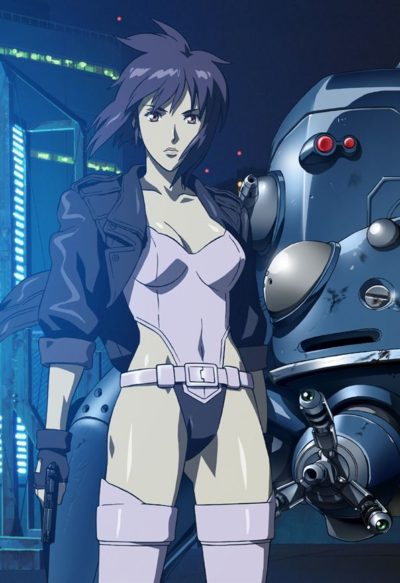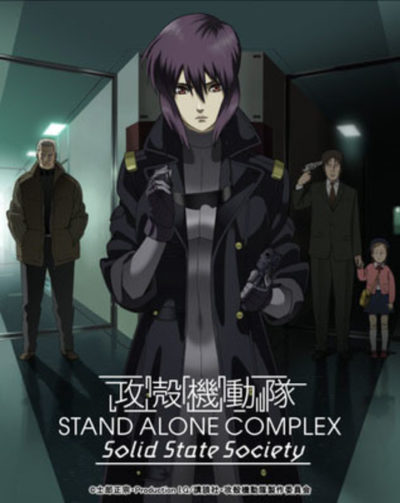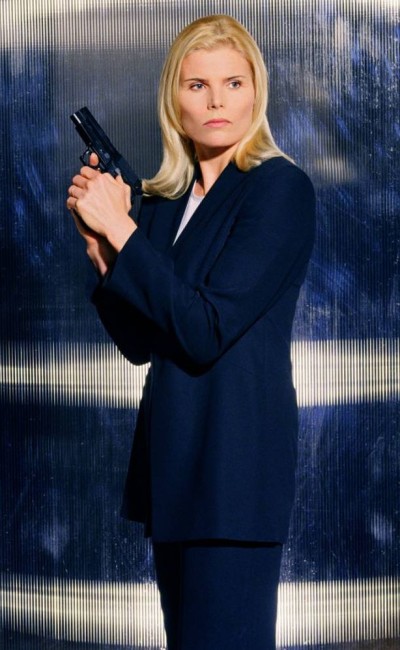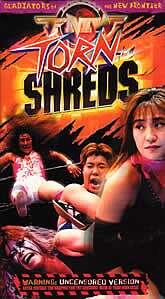★★★½
“We need to go deeper…”
 Despite the critical and commercial success of the original film, it took a while for anything further to emerge from the GitS universe. Over the seven years after the movie, the only adapted media to be released was a 1997 video-game. This hiatus came to an end in October 2002 when Stand Alone Complex took the air on Japanese satellite station SKY PerfecTV!. This was a 26-part series, each episode lasting 25 minutes, and was followed in 2004 by S.A.C. 2nd GIG, which had the same format. In turn, the first season was adapted into both a feature-length version, The Laughing Man, and two manga volumes, while the second was also edited down into a feature-length edition, Individual Eleven.
Despite the critical and commercial success of the original film, it took a while for anything further to emerge from the GitS universe. Over the seven years after the movie, the only adapted media to be released was a 1997 video-game. This hiatus came to an end in October 2002 when Stand Alone Complex took the air on Japanese satellite station SKY PerfecTV!. This was a 26-part series, each episode lasting 25 minutes, and was followed in 2004 by S.A.C. 2nd GIG, which had the same format. In turn, the first season was adapted into both a feature-length version, The Laughing Man, and two manga volumes, while the second was also edited down into a feature-length edition, Individual Eleven.
The main advantage the TV series offers over the movie should be apparent: it has much greater scope at which to explore the world of cyberbrain networks, information warfare, and their resulting impact on society and humanity. This is particularly apparent early on in the first series. There does eventually develop an ongoing story arc, focusing on the search for an elite hacker (the “Laughing Man”, who takes inspiration from a J.D. Salinger short story) who is trying to expose a conspiracy between the government and cyber-medical companies. But the series also has episodes that don’t advance this at all, exploring other aspects of life in the technologically advanced society which is 2030’s Japan.
It can also be pretty damn cerebral at times. Even the titlular concept, the “Stand Alone Complex”, is not easy for the viewer to wrap their head around. It’s a little bit like the notion of copycat incidents – except, in the case of the Stand Alone Complex, the original didn’t take place, or at least not in the way perceived by those who copy it. It’s probably easiest to provide an example: “Slender Man”. This was a supposed supernatural creature, belief in which reportedly caused two 12-year-old girls to stab another, a ritual designed to impress Slender Man. But the urban legend in question was actually a piece of fiction, created wholesale by a Internet forum user. This idea informs both seasons, with reality and perceived reality both triggering subsequent actions. It’s sometimes way above my head, that’s for sure.
Another result of the extra room is an approach which occasionally becomes meandering to the point of irritation. On the other hand, you can only admire a show which is confident enough in its own abilities, to have an episode which takes place, almost in its entirety, in an Internet chat room. Another ongoing thread is the growing self-awareness of the Tachikomas, independent AI tanks employed by Section 9. These feature in little vignettes at the end of every episode in the first season. To be honest, I initially found their squeaky little voices fairly irritating and fast-forwarded as soon as the final credits rolled. However, they did redeem themselves with a surprising bit of altruism at the end of the series, and were considerably more tolerable in the second season.
Compared to the movie, the animation is a little less fluid – as you’d expect, given the constraints of cost and time. The budget was reportedly $300,000 per episode, compared to $10 million for the film: so the entire first season, running nine hours or so (excluding credits), still cost less than the 80-minute movie, even allowing for seven years of inflation. The style is also a little different, with the character designs more closely resembling the original manga. This is perhaps most apparent in the look of Major Kusanagi. For the TV version seems quite enthusiastic in the area of fan service, with some of her costumes looking as if she’d just rolled out of a Victoria’s Secret catalogue, rather than those typically worn by a public servant – see below for an example!
 While the feature focused directly on the Major and her quest for identity, the series also uses its greater freedom to become more of an ensemble piece. The Major is clearly still the leader and boss, with skills that surpass everyone else – they defer to her, and it’s entirely understandable. But over the course of these 52 episodes, the spotlight turns at one point onto just about everyone else, from her hulking second-in-command, former Army Ranger Batou, through to Togusa, the member of Section 9 who has undergone the least amount of cybernetic enhancement. This allows it to explore their history. For example, the (somewhat notorious, due to its graphic violence) “Jungle Cruise” episode, had Batou hunting down an ex-military colleague who has become a serial killer.
While the feature focused directly on the Major and her quest for identity, the series also uses its greater freedom to become more of an ensemble piece. The Major is clearly still the leader and boss, with skills that surpass everyone else – they defer to her, and it’s entirely understandable. But over the course of these 52 episodes, the spotlight turns at one point onto just about everyone else, from her hulking second-in-command, former Army Ranger Batou, through to Togusa, the member of Section 9 who has undergone the least amount of cybernetic enhancement. This allows it to explore their history. For example, the (somewhat notorious, due to its graphic violence) “Jungle Cruise” episode, had Batou hunting down an ex-military colleague who has become a serial killer.
The second season, while still having some individual episodes, has an interesting main thread which has become particularly relevant in the light of subsequent geo-political events. A refugee crisis has broken out, leading to a large influx of displaced people to Japan, causing tension between them and the locals. A charismatic refugee leader, Kuze, has sprung up, leading a movement demanding autonomy for the island where they are being housed. A right-wing group within the government, led by creepy intelligence officer Goda, seeks to exploit the tension by “false flagging” a nuclear incident as a refugee terrorist act, allowing the group to stage effectively a military coup. While originally inspired by the Japanese reaction to 9/11, it’s easy to see parallels to the current world situation here.
Partly due to this, I’m curious to see how much of the series ends up present in the live-action film. The very first episode includes a hostage situation involving android geisha, which is a part of the trailers we’ve seen. As mentioned, each series was edited down into a feature-length compilation, so could be the basis for the 2017 story – though as I haven’t bothered with those, I can’t comment on how coherent the results ended up. But other aspects of the trailers appear to come from the original movie, so I suspect we’ll be looking at a combination, drawing from multiple elements of the GitS universe. It’ll probably be based more on “what looks cool?” rather than narrative sense!
Dir: Kenji Kamiyama
Star (voice): Mary Elizabeth McGlynn, Richard Epcar, Crispin Freeman, William Frederick Knight
Ghost in the Shell: Stand Alone Complex – Solid State Society
★★½
“Solid State Survivors.”
 A rather clunky title for an OAV (original animation video), which came out in September 2006, about 18 months after the end of season two. It’s also two years after the events depicted, with Major Kusanagi (Tanaka) having quit her job as Section 9, and largely dropped off the grid. Batou (Ōtsuka) has taken over her position as S9’s top field operative, with Togusa (Yamadera) the. After a series of suicides exposes a plot for a bioterror attack, the group is on the hunt for a hacker called the Puppeteer, apparently behind it. But the investigation finds the apparent attack was almost a diversion, and uncovers a massive child abduction ring that may be responsible for as many as 20,000 kidnappings.
A rather clunky title for an OAV (original animation video), which came out in September 2006, about 18 months after the end of season two. It’s also two years after the events depicted, with Major Kusanagi (Tanaka) having quit her job as Section 9, and largely dropped off the grid. Batou (Ōtsuka) has taken over her position as S9’s top field operative, with Togusa (Yamadera) the. After a series of suicides exposes a plot for a bioterror attack, the group is on the hunt for a hacker called the Puppeteer, apparently behind it. But the investigation finds the apparent attack was almost a diversion, and uncovers a massive child abduction ring that may be responsible for as many as 20,000 kidnappings.
Even by the standards of a series which has always waxed philosophical, this has some pretty deep constructs. For example, the Puppeteer is described by the Major as a “rhizome”. Wikipedia tells me this is a concept developed by Gilles Deleuze and Félix Guattari in their Capitalism and Schizophrenia (1972–1980) project. It is what Deleuze calls an “image of thought,” based on the botanical rhizome, that apprehends multiplicities. Well, glad we’ve cleared that up, then. Fortunately, you don’t really need to understand any of this: basically just think of of it as an example of a computer network becoming self-aware, and acting on its own behalf. Everything beyond that, feels a bit like extracts from a paper by a college student who wants you to know how deep they are.
It’s somewhat better when not vanishing up its own philosophical backside. Probably the best sequence has Togusa becoming the victim of a brain-hack and compelled to make a terrible choice: hand his own daughter over to the Puppeteer, to become one of the abductees (with his memory then wiped) or kill himself. It’s a chilling sequence, and also marks the return of the Major to work with Section 9. She has been carrying out her own investigation, free from the restrictions inevitably resulting out of her official role. It turns out to be connected to the aging of Japanese society – a major problem now, and likely to be worse by the late 2030’s when this is set.
It looks pretty slick, with a budget definitely on the high-end for video animation, and there’s no need to have seen the TV series, for this to make sense. But it’s largely forgettable stuff, and the significant absence of the Major, particularly in the first half, weakens proceedings considerably, robbing it of the universe’s most memorable character.
Dir: Kenji Kamiyama
Star (voice): Atsuko Tanaka, Akio Ōtsuka, Koichi Yamadera, Osamu Saka





 The low score for this is partly not entirely the film’s fault. Despite the title, it’s actually the third entry in a series of TV movies – following First Daughter and First Target. All focus on blonde Secret Service agent Alex McGregor, charged with protecting the President and his family. However, only this one is available on Netflix, which is where I picked it up: had I known in advance, I would likely have started at the beginning. Certainly, the abundance of references to events prior to the start of this movie becomes explicable – if no less irritating – and this might well make more sense if you’ve seen, in particular, First Daughter. The makers seem largely to ignore the second entry, First Target – perhaps because the role of McGregor there was played by Daryl Hannah, after Mariel Hemingway turned down the role she had played in #1. She returned here,
The low score for this is partly not entirely the film’s fault. Despite the title, it’s actually the third entry in a series of TV movies – following First Daughter and First Target. All focus on blonde Secret Service agent Alex McGregor, charged with protecting the President and his family. However, only this one is available on Netflix, which is where I picked it up: had I known in advance, I would likely have started at the beginning. Certainly, the abundance of references to events prior to the start of this movie becomes explicable – if no less irritating – and this might well make more sense if you’ve seen, in particular, First Daughter. The makers seem largely to ignore the second entry, First Target – perhaps because the role of McGregor there was played by Daryl Hannah, after Mariel Hemingway turned down the role she had played in #1. She returned here,  It’s easy to dismiss this, for its low production values, sometimes laughable dialogue and wildly-implausible plot – and I could hardly argue. Yet we still enjoyed this, thanks largely to performances which sustained us through the bad matte paintings, clunky lines, and mediocre action scenes. Of course, to use a pro-wrestling term, we’re huge Rutger marks, so seeing him as evil medieval warlord Grekkor is a big plus, harking back to his work in Flesh + Blood for Paul Verhoeven. Pacula is a “crusader mom” (for want of a better word), back from the Holy Land where she vowed to go after making a deal with God to let her son survive. However, she returns just after Grekkor and his sidekick (Vosloo) have swept her boy off with them. She goes to rescue him, teaming up with three other women on the way, as she heads towards the inevitable confrontation with Grekkor.
It’s easy to dismiss this, for its low production values, sometimes laughable dialogue and wildly-implausible plot – and I could hardly argue. Yet we still enjoyed this, thanks largely to performances which sustained us through the bad matte paintings, clunky lines, and mediocre action scenes. Of course, to use a pro-wrestling term, we’re huge Rutger marks, so seeing him as evil medieval warlord Grekkor is a big plus, harking back to his work in Flesh + Blood for Paul Verhoeven. Pacula is a “crusader mom” (for want of a better word), back from the Holy Land where she vowed to go after making a deal with God to let her son survive. However, she returns just after Grekkor and his sidekick (Vosloo) have swept her boy off with them. She goes to rescue him, teaming up with three other women on the way, as she heads towards the inevitable confrontation with Grekkor. I really wanted to use little barb-wire icons to mark this one, instead of the usual stars, but whenever I typed in “barb wire jpg” into search engines, I always seemed to find myself staring at Pamela Anderson. Yes, get those digressions out of the way early, that’s what I always say…
I really wanted to use little barb-wire icons to mark this one, instead of the usual stars, but whenever I typed in “barb wire jpg” into search engines, I always seemed to find myself staring at Pamela Anderson. Yes, get those digressions out of the way early, that’s what I always say… Thirdly, while they
Thirdly, while they  The only major change here is how
The only major change here is how  Obviously inspired by a certain raider of tombs, this has Yuan as Georgia, who was rescued from an orphanage, along with her sister (Koinuma) and trained in… well, raiding tombs. When their foster father vanishes while on an expedition seeking the secret of immortality, the two siblings head off to look for him, only to come under attack from a range of locals, natives and the local fauna. Meanwhile, Professor Ivy Chan (Shimada) links up with billionaire art-collector Michael Lui (Wong), and discovers that shady forces are after a relic possessed by Ivy, and that they need to follow the girls into the remote jungle.
Obviously inspired by a certain raider of tombs, this has Yuan as Georgia, who was rescued from an orphanage, along with her sister (Koinuma) and trained in… well, raiding tombs. When their foster father vanishes while on an expedition seeking the secret of immortality, the two siblings head off to look for him, only to come under attack from a range of locals, natives and the local fauna. Meanwhile, Professor Ivy Chan (Shimada) links up with billionaire art-collector Michael Lui (Wong), and discovers that shady forces are after a relic possessed by Ivy, and that they need to follow the girls into the remote jungle. Ji-Won (Lee Yo-Won) and her friend So-Hyun (Kim) make a trip to the seaside, borrowing a car from a friend. However, the auto turns out to have a couple of guns in it, lost by a gangster and cop in a poker game. The weapons come in handy when the girls need to escape from some assailants, but when they are joined by a manic waitress with no sense of gun-control, the now-trio find themselves on the run from police. A clothing-store owner with a grudge, completes the quartet, as they try to make their way back to Seoul – and they are pursued not only by the cops, also by the previous owners of the guns, who need to get them back to prevent issues of their own. Conversely, their exploits and subsequent media attention are getting them fans of their own, with the titular website (it stands for Adoring Four Revolutionary Idols Korea Association) extolling their virtues and provoking copycat crimes.
Ji-Won (Lee Yo-Won) and her friend So-Hyun (Kim) make a trip to the seaside, borrowing a car from a friend. However, the auto turns out to have a couple of guns in it, lost by a gangster and cop in a poker game. The weapons come in handy when the girls need to escape from some assailants, but when they are joined by a manic waitress with no sense of gun-control, the now-trio find themselves on the run from police. A clothing-store owner with a grudge, completes the quartet, as they try to make their way back to Seoul – and they are pursued not only by the cops, also by the previous owners of the guns, who need to get them back to prevent issues of their own. Conversely, their exploits and subsequent media attention are getting them fans of their own, with the titular website (it stands for Adoring Four Revolutionary Idols Korea Association) extolling their virtues and provoking copycat crimes.